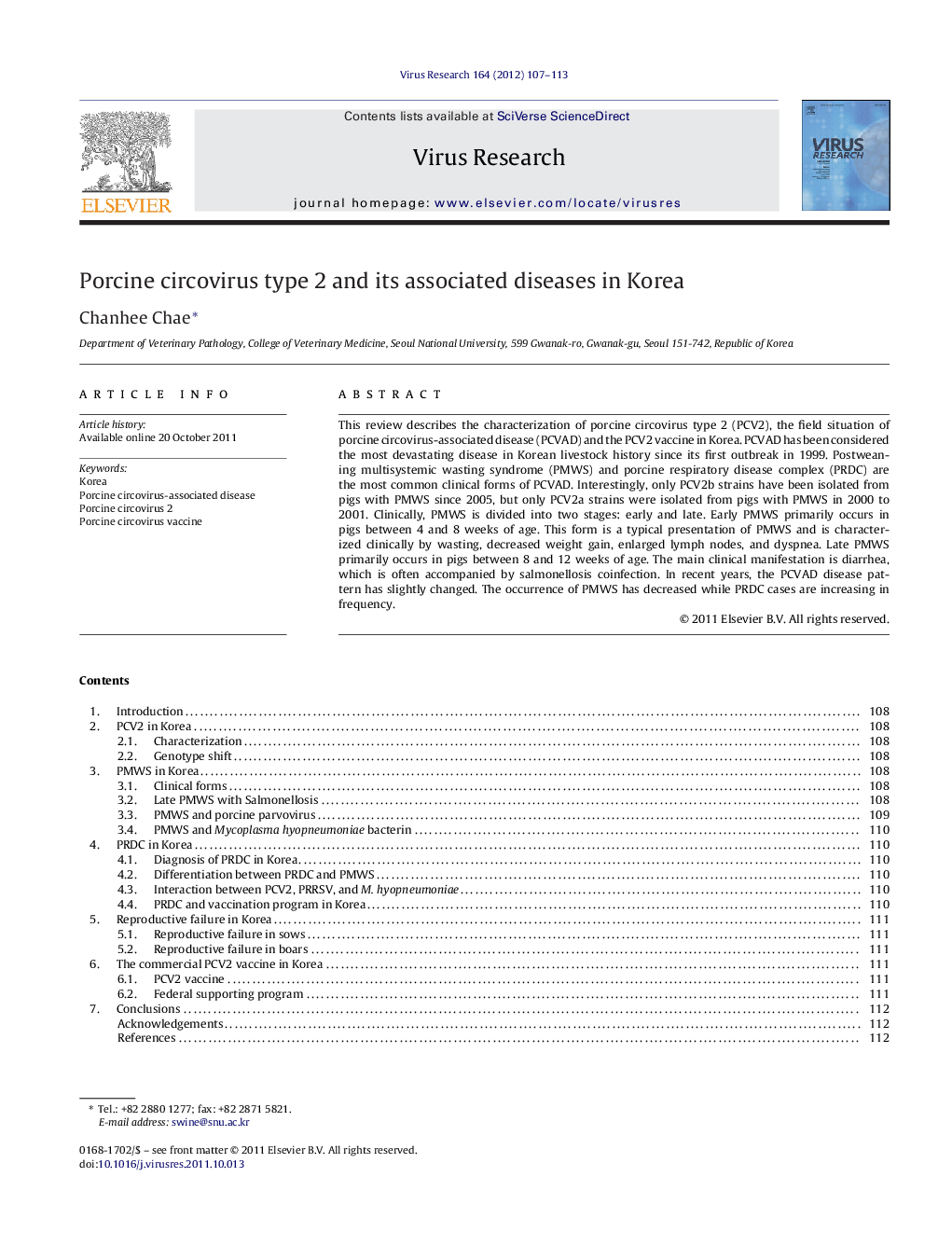| Article ID | Journal | Published Year | Pages | File Type |
|---|---|---|---|---|
| 3428824 | Virus Research | 2012 | 7 Pages |
This review describes the characterization of porcine circovirus type 2 (PCV2), the field situation of porcine circovirus-associated disease (PCVAD) and the PCV2 vaccine in Korea. PCVAD has been considered the most devastating disease in Korean livestock history since its first outbreak in 1999. Postweaning multisystemic wasting syndrome (PMWS) and porcine respiratory disease complex (PRDC) are the most common clinical forms of PCVAD. Interestingly, only PCV2b strains have been isolated from pigs with PMWS since 2005, but only PCV2a strains were isolated from pigs with PMWS in 2000 to 2001. Clinically, PMWS is divided into two stages: early and late. Early PMWS primarily occurs in pigs between 4 and 8 weeks of age. This form is a typical presentation of PMWS and is characterized clinically by wasting, decreased weight gain, enlarged lymph nodes, and dyspnea. Late PMWS primarily occurs in pigs between 8 and 12 weeks of age. The main clinical manifestation is diarrhea, which is often accompanied by salmonellosis coinfection. In recent years, the PCVAD disease pattern has slightly changed. The occurrence of PMWS has decreased while PRDC cases are increasing in frequency.
